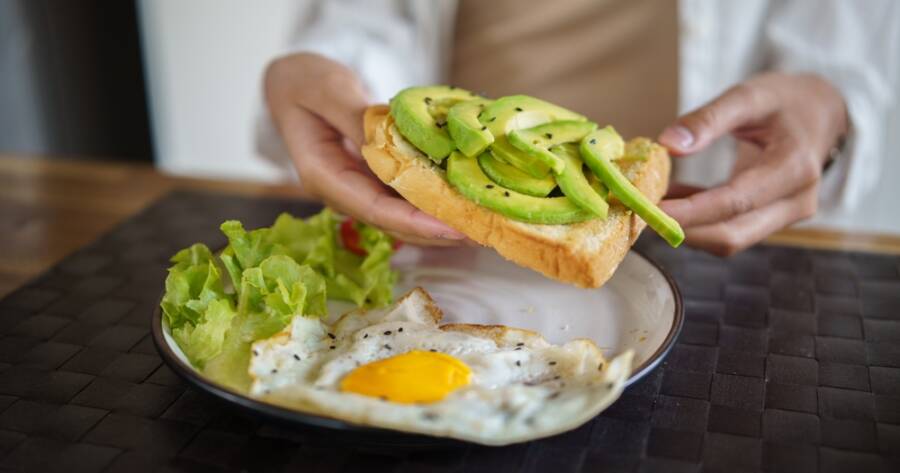Nothing captures the promise of wellness like small shifts that feel manageable. Nutrition doesn’t require dramatic overhauls—just thoughtful swaps that gradually build better habits. Choosing whole foods over processed ones, adjusting ingredients in favorite recipes, and focusing on balance and satisfaction can work wonders. Each small change nudges your body toward more energy, steadier mood, and better long-term health. Smart swaps make healthy eating less about restriction and more about evolution—one simple choice at a time.
Swap Refined Grains for Whole Grains or Alternatives
Refined grains like white rice, white bread, and regular pasta often lack fiber and key nutrients, which leads to quicker digestion and blood sugar spikes. Over time, these swings can increase cravings and make it harder to manage energy levels. Switching to whole-grain bread, brown rice, quinoa, or oats restores fiber, vitamins, and sustained fullness that keeps you satisfied for longer.
In dishes where texture matters—such as lasagna, stir-fries, or wraps—try alternative bases like spiralized zucchini, cauliflower rice, or chickpea pasta. These swaps keep meals interesting while boosting nutrient density and lowering refined-carb intake. Whole grains also deliver essential minerals like magnesium and selenium, which support heart health and metabolism.
Choose Lean or Plant-Based Proteins Over Processed Meats
Processed meats—like bacon, sausage, and deli cuts—often contain high levels of sodium, preservatives, and saturated fats. These can contribute to inflammation and increased cardiovascular risk. Replacing them with lean chicken, turkey, fish, or plant proteins such as beans, lentils, tempeh, or tofu offers similar satisfaction without the downside. The added fiber from plant sources supports digestion and balances cholesterol levels.
Recent studies show that swapping just a few servings of red or processed meat per week for plant-based proteins can significantly lower LDL (“bad”) cholesterol and improve heart health. If you’re easing into this transition, start small—add black beans to tacos, lentils to soups, or tofu to stir-fries. Over time, your palate adjusts, and you’ll discover new flavors that make healthier eating genuinely enjoyable.
Trade Added Sugars and Sweetened Drinks for Natural Alternatives
Sugary drinks like sodas, energy drinks, and fruit juices (even “100% juice”) deliver concentrated sugar without the fiber that whole fruit provides. The result? Quick spikes in energy followed by fatigue and mood dips. Replacing them with water, sparkling water infused with citrus or berries, green tea, or herbal infusions reduces empty calories and supports hydration. These drinks refresh without the crash.
When it comes to desserts, natural sweeteners can add flavor and nutrients. Mashed bananas, unsweetened applesauce, dates, or pure maple syrup bring natural sweetness along with fiber and trace minerals. Even small substitutions—like cutting sugar in coffee or using cinnamon to enhance flavor—can have lasting effects. The goal isn’t to eliminate sweetness, but to enjoy it in ways that nourish rather than deplete.
Replace Saturated Fats with Healthier Fats
Butter, lard, and some tropical oils are rich in saturated fats, which, when eaten in excess, may raise LDL cholesterol. Swapping them for olive oil, avocado oil, or nut butters introduces heart-healthy monounsaturated and polyunsaturated fats. These support brain function, hormone balance, and long-term cardiovascular wellness.
In everyday cooking, small adjustments go a long way. Use olive oil for sautéing vegetables, spread mashed avocado on toast instead of butter, or try hummus in place of creamy dressings. In baking, you can replace part of the butter with Greek yogurt, pumpkin puree, or mashed avocado to maintain texture while reducing saturated fat. These swaps improve flavor and texture while aligning with a heart-healthy lifestyle.
Optimize Snacks and Condiments Wisely
Snacking presents frequent opportunities for swaps. Instead of potato chips, try air-popped popcorn, kale chips, roasted chickpeas, or vegetable sticks with hummus. These choices typically deliver more fiber, protein, and micronutrients.
Condiments and dressings often carry hidden sugar, salt, or unhealthy fats. Make your own vinaigrettes using olive oil, vinegar, herbs, and a bit of mustard. Use plain Greek yogurt as a base in place of sour cream or heavy mayonnaise.
Building a Healthier Plate, Bit by Bit
Real nutritional change doesn’t require instant perfection. It happens when you consistently choose better alternatives—whole grains instead of refined, lean proteins over processed, natural sweetness over added sugar, healthier fats, and smarter snacks. Over weeks and months, those shifts compound. Your energy stabilizes, cravings mellow, digestion improves, and health markers follow. These swaps aren’t about deprivation—they’re about evolution and making your diet work with your life, not against it.

